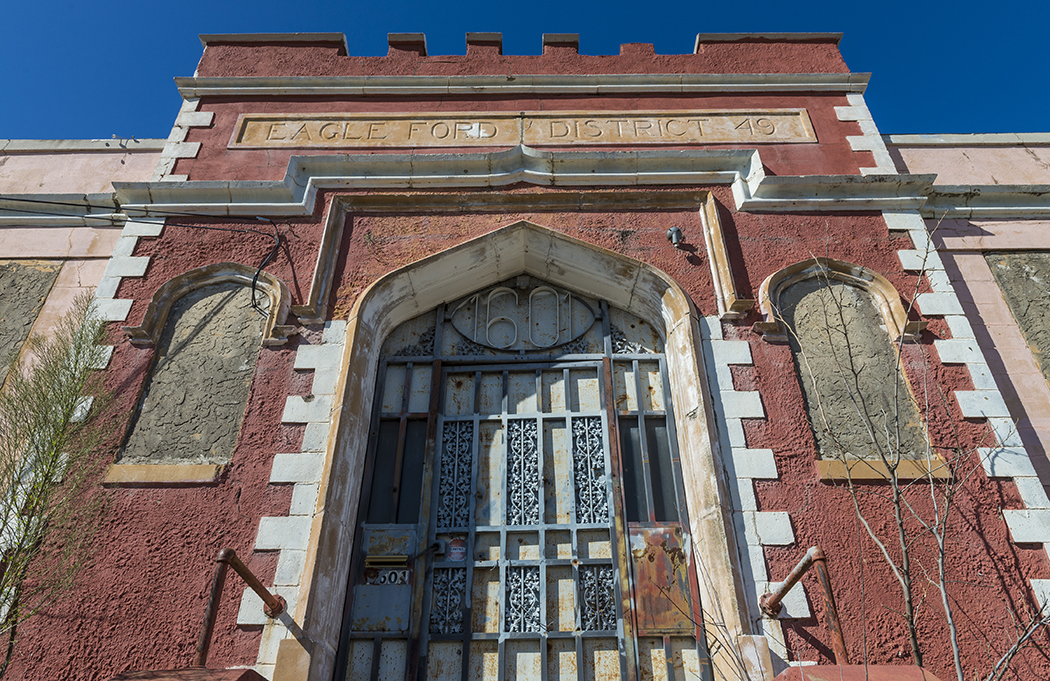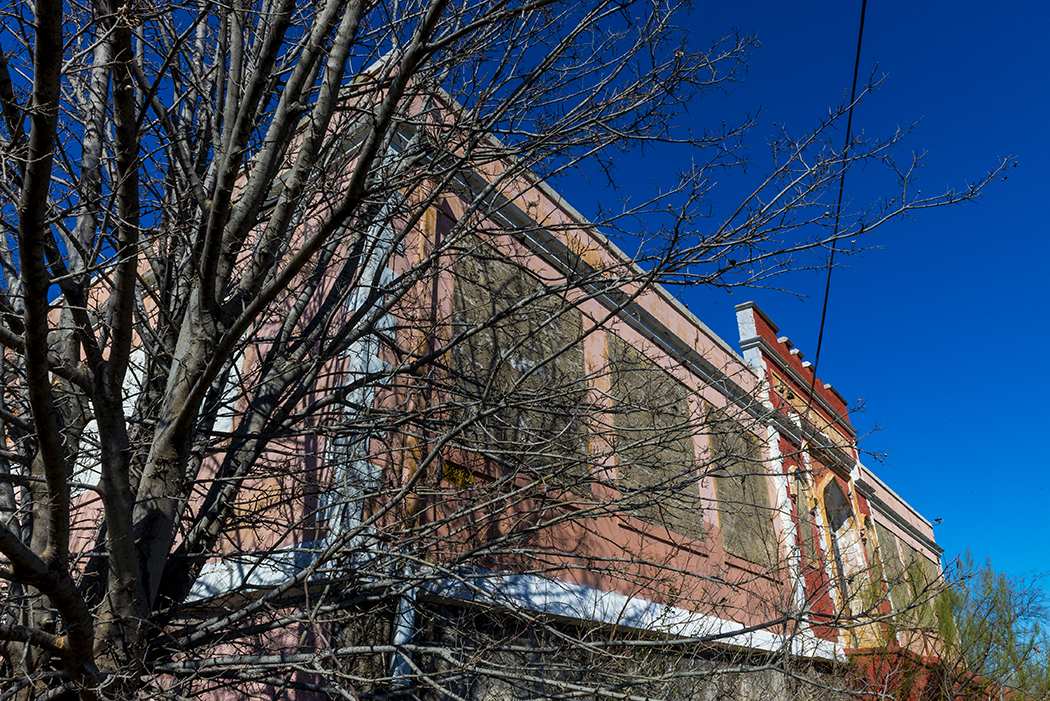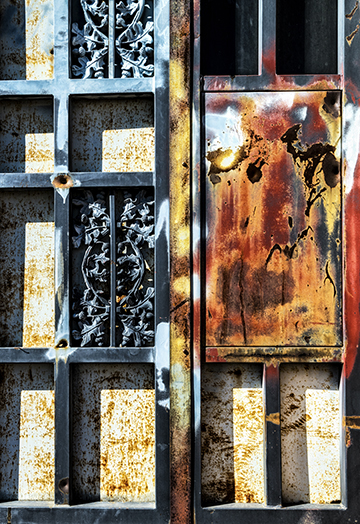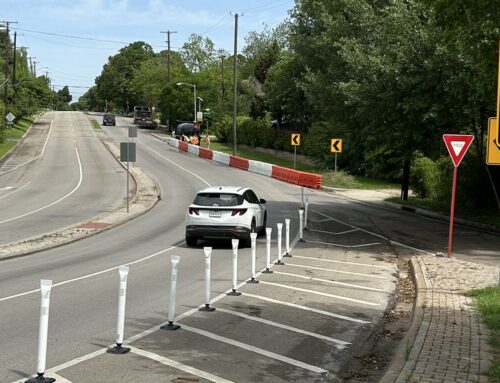
The Eagle Ford School on Chalk Hill Road is in the gothic revival style and was constructed in 1923 of concrete. Preservationists are moving to make the building a designated historic landmark. (Photo by Danny Fulgencio)
Bad things happen on Chalk Hill Road.
No one lives on the stretch between West Davis and Interstate 30, but plenty people have died there.
Randy Dumse has owned the old Eagle Ford School on Chalk Hill Road since 1987.
In that time, he’s been shot at, witnessed a fatal hit-and-run accident and found many stolen cars, among other illicit incidents that occurred weekly if not daily. Throughout the 1990s, several people were murdered there, and other victims were dumped there after the fact.
Dumse ran his computer-board manufacturing company, New Micros Inc., out of the building until a few years ago. He never fixed up the exterior or put up a sign as to avoid drawing attention.
Now retired, he wants to sell the old pink school on the hill.
There is a taker — a telecom company that already leases part of the land for a cell tower — but they would tear the building down, at odds with preservation efforts currently underway.
The school is one of the last structures related to the bygone Eagle Ford community. It served generations of Mexican-American children, although it’s most famous as the elementary school that the outlaw Bonnie Parker attended.
The Dallas Landmark Commission and the Dallas Mexican American Historical League recently began the process to make the school a designated historic landmark. The landmark commission’s recent vote, if approved by City Council, would spare the building from demolition while it’s being considered for landmark status, which takes two years.
Eagle Ford School would be among the first historic landmarks in West Dallas, and only the fourth citywide related to Mexican-American history (the other three are St. Ann’s School, Pike Park and Luna’s Tortilla Factory, all in the old Little Mexico neighborhood, now called Uptown).
Children attending Eagle Ford School lived in Trinity Portland Cement Co. housing, Arcadia Park the Ledbetter neighborhood and rural areas.
The Trinity cement company, which operated from 1909-1970, was the largest cement producer in Dallas, and it created a company town, Cement City, which Hispanics called “cemento grande.” At its height in the 1920s, about 900 people called Cement City home. It had a medical clinic, a grocery, churches, a baseball field with bleachers, a golf driving range and tennis courts.
From Oak Cliff-based architect Marcel Quimby’s research on Eagle Ford:
“Houses in the Mexican-American village were mostly ‘shotgun’ style with five to six rooms and front porches and were without bathrooms; streets were unpaved. The Mexican-American village contrasted with the larger homes with indoor plumbing, paved streets and sidewalks and well-kept lawns in the Anglo village.”
The Eagle Ford School was built in 1923 with Dallas city bond funding, and the Trinity cement company donated the supplies. It was built of concrete in the gothic revival style.
It’s built like a tank.
But Dumse says it’s not as sturdy as it was 10 or 20 years ago.
Historic preservation efforts “could complicate the sale of it, and the building has deteriorated significantly in the last few years,” he says. “There are separations in the walls and other problems.”
The building is on the tax rolls for around $200,000, and it’s on the market for “over a quarter million” he says.
Dumse now lives in East Texas. He had two strokes recently, and he can’t care for the building as he once did. Its triangulation amid high-crime areas and its remote location in an industrial neighborhood seems constantly to draw people with bad intentions, he says.
“If somebody wanted to take it over and use it for a museum or something of that nature, I’d highly applaud them on it,” he says. “But for me, I need to cash out and be done.”

The Eagle Ford School is on Chalk HIll Road, which has been plagued over the years with strange and violent crimes. (Photo by Danny Fulgencio)






